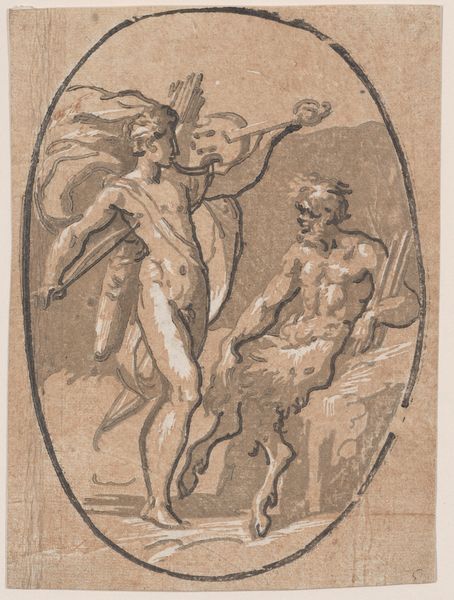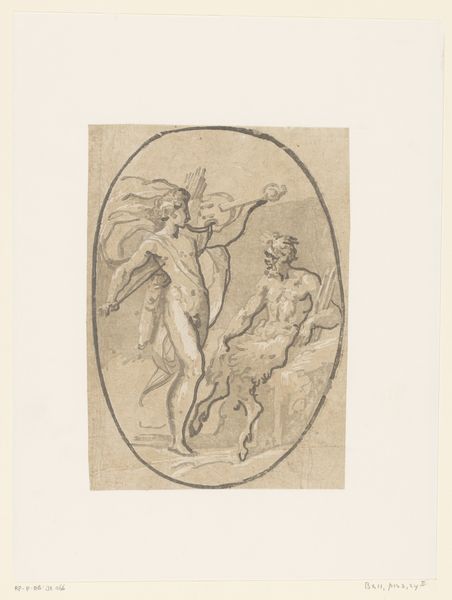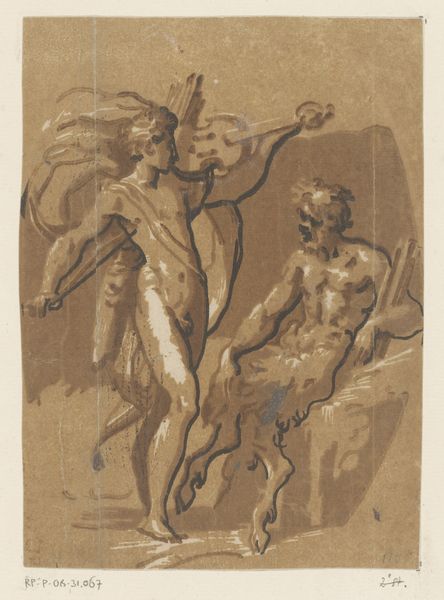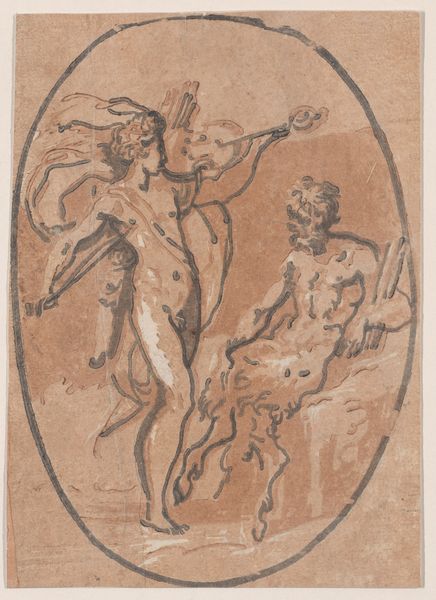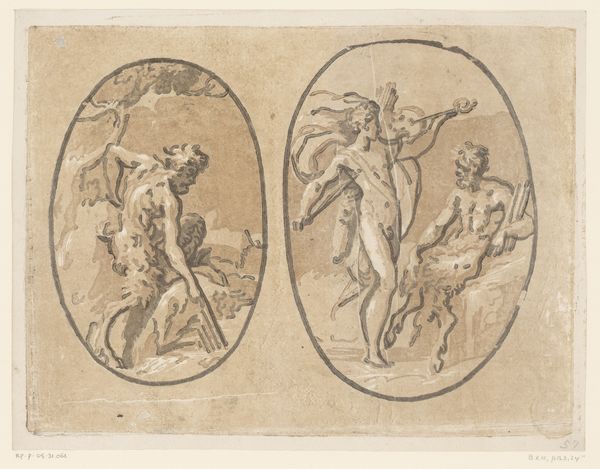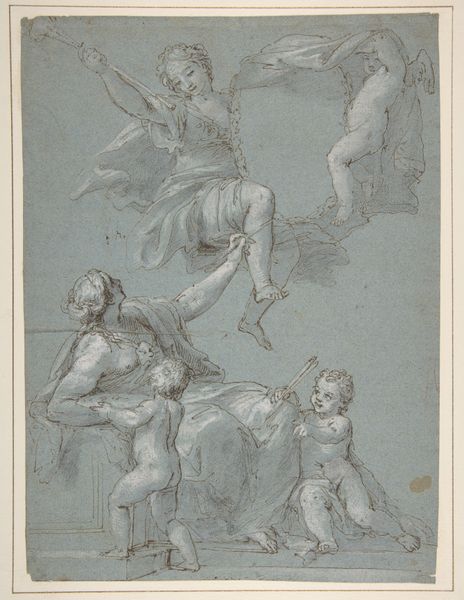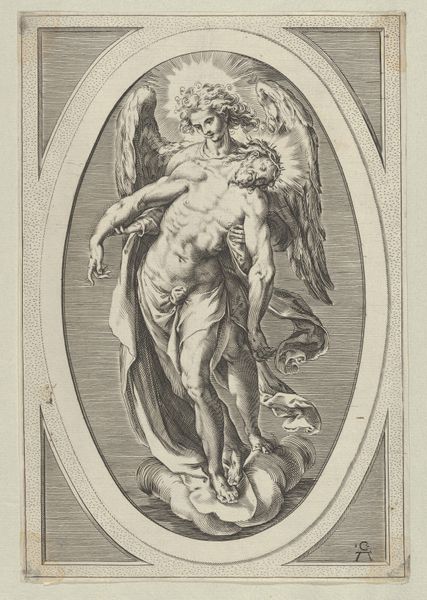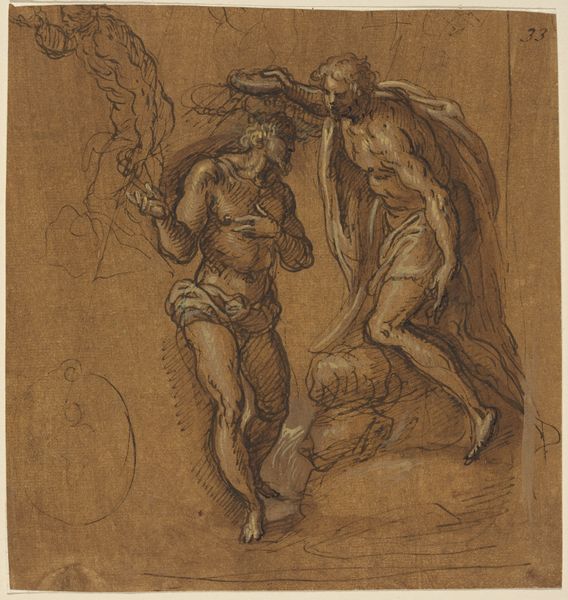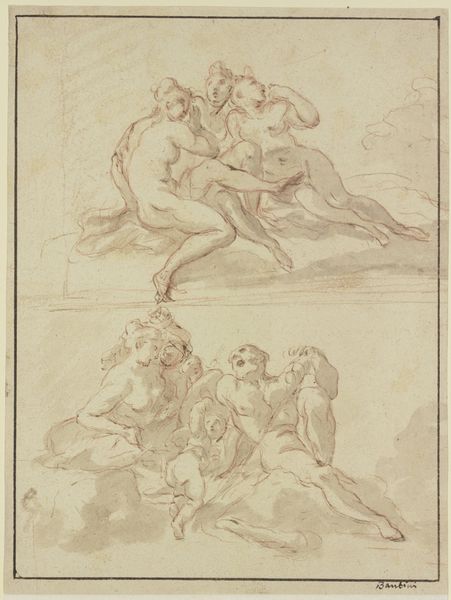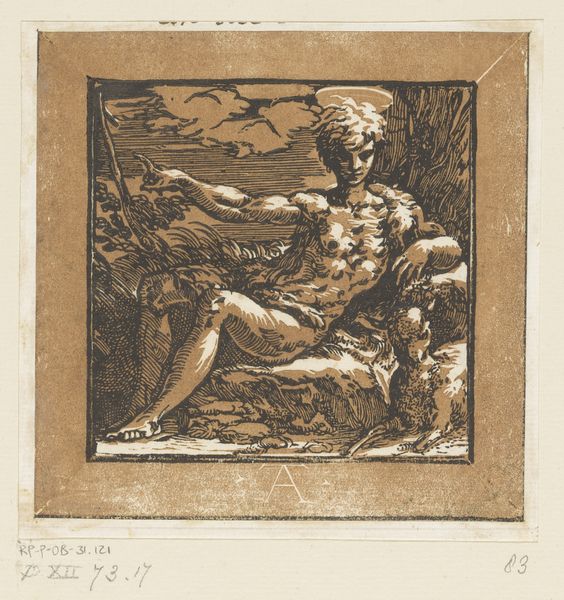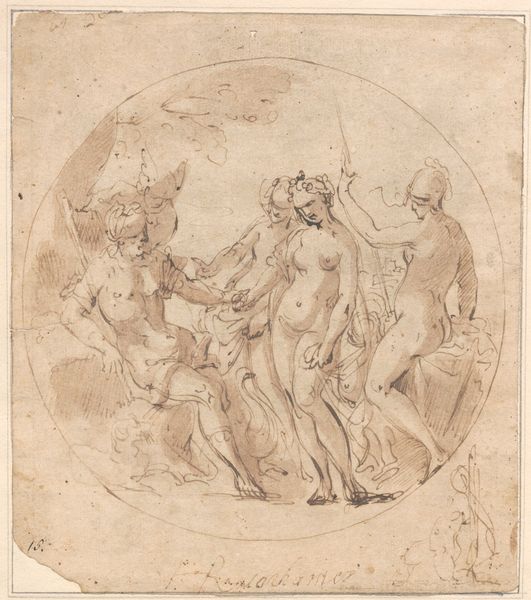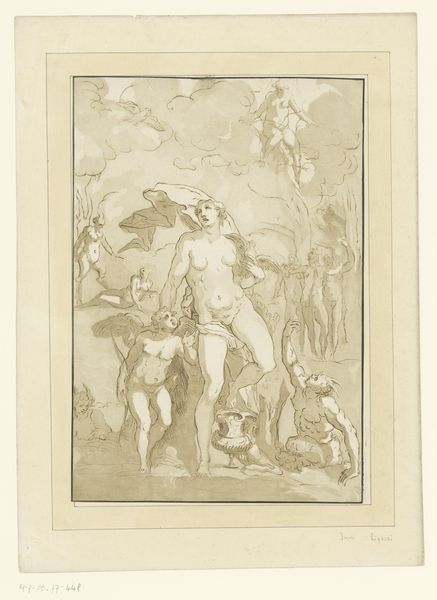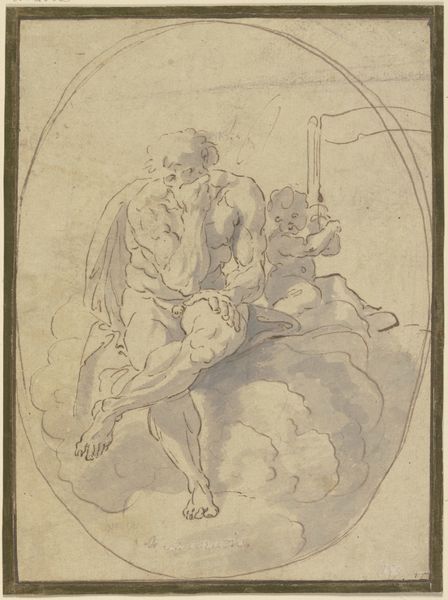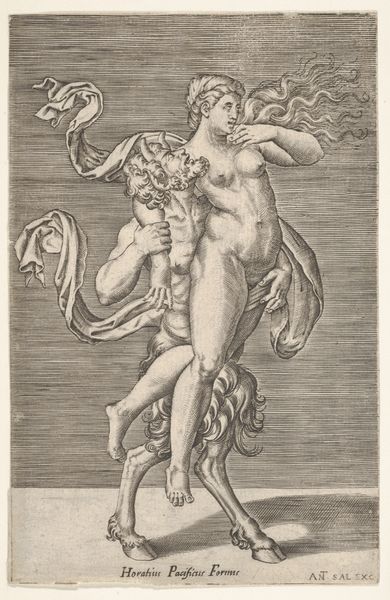
drawing, ink
#
drawing
#
narrative-art
#
figuration
#
ink
#
ink drawing experimentation
#
italian-renaissance
Dimensions: height 218 mm, width 148 mm
Copyright: Rijks Museum: Open Domain
Curator: Looking at this intriguing ink drawing titled "Wedstrijd tussen Apollo en Marsyas," or "The Contest between Apollo and Marsyas" by Ugo da Carpi, made sometime between 1502 and 1532, what strikes you first? Editor: The starkness of the scene, rendered simply in ink. The composition, confined within an oval, feels tense. A moment before some great artistic violence. Curator: Absolutely. Consider how the myth is framed. Apollo, symbol of refined artistic skill, faces off against Marsyas, a satyr known for his raw, untamed music. It embodies the enduring tension between the Apollonian and Dionysian ideals, with inherent class structures and implications for who gets to be 'artistic'. Editor: But note how the materiality underscores this too. The ink, readily available, allows Da Carpi to explore the human form—classical ideal—and challenge its very refinement through the material limitations, smudging the hierarchical notions. Curator: True. Da Carpi masterfully uses ink to hint at movement and emotional turmoil, particularly visible in the posture of Marsyas. His reclining figure, contrasted with Apollo's active stance, could be read as a commentary on societal power structures and whose bodies are 'allowed' to be active versus passive. Editor: Moreover, the use of ink suggests a rapidness of production. Not as expensive or as detailed compared to some fresco of the period. Does this lend an intimacy to a narrative freighted with violent judgement and the victory of supposed refinement over the raw materiality of satyr life? The labour needed to render a god. The speed with which the bestial is drawn, only to then to be rendered defeated... Curator: That is insightful, reframing 'refinement' as just another technology for dominating, erasing what isn’t aligned with privilege. Even within the controlled form of an ink drawing, there is something radical to this contest's commentary on domination. Editor: This piece compels us to question the very basis of art history, prompting us to dismantle oppressive artistic traditions of labor division and value that haunt us. What are our materials to that aim, do you think? Curator: To ensure space for intersectional narratives of liberation. I hadn't thought to look for them even here.
Comments
No comments
Be the first to comment and join the conversation on the ultimate creative platform.
